 Technology
Technology  Technology
Technology  Humans
Humans 10 Everyday Human Behaviors That Are Actually Survival Instincts
 Animals
Animals 10 Animals That Humiliated and Harmed Historical Leaders
 History
History 10 Most Influential Protests in Modern History
 Creepy
Creepy 10 More Representations of Death from Myth, Legend, and Folktale
 Technology
Technology 10 Scientific Breakthroughs of 2025 That’ll Change Everything
 Our World
Our World 10 Ways Icelandic Culture Makes Other Countries Look Boring
 Misconceptions
Misconceptions 10 Common Misconceptions About the Victorian Era
 Mysteries
Mysteries 10 Strange Unexplained Mysteries of 2025
 Miscellaneous
Miscellaneous 10 of History’s Most Bell-Ringing Finishing Moves
 Technology
Technology Top 10 Everyday Tech Buzzwords That Hide a Darker Past
 Humans
Humans 10 Everyday Human Behaviors That Are Actually Survival Instincts
 Animals
Animals 10 Animals That Humiliated and Harmed Historical Leaders
Who's Behind Listverse?

Jamie Frater
Head Editor
Jamie founded Listverse due to an insatiable desire to share fascinating, obscure, and bizarre facts. He has been a guest speaker on numerous national radio and television stations and is a five time published author.
More About Us History
History 10 Most Influential Protests in Modern History
 Creepy
Creepy 10 More Representations of Death from Myth, Legend, and Folktale
 Technology
Technology 10 Scientific Breakthroughs of 2025 That’ll Change Everything
 Our World
Our World 10 Ways Icelandic Culture Makes Other Countries Look Boring
 Misconceptions
Misconceptions 10 Common Misconceptions About the Victorian Era
 Mysteries
Mysteries 10 Strange Unexplained Mysteries of 2025
 Miscellaneous
Miscellaneous 10 of History’s Most Bell-Ringing Finishing Moves
10 Bible Passages That Might Be Totally Bogus
Experts whose task it is to determine the original wording of the New Testament are called textual critics. In some cases, textual critics can deduce things about the text by taking into account such factors as internal consistency and literary style. That’s important because there are currently around 5,800 ancient Greek manuscripts or fragments of the New Testament. Almost none of them completely agree with the others in wording. Over 99 percent of these variant readings are mere spelling errors, word transpositions, or mistakes due to simple carelessness. But a small number of errors hint at deliberate, later insertions that could substantially affect Christian doctrine and understanding.
10The Triune Formula

Known as the “Great Commission,” Matthew 28:19 describes Jesus sending his disciples out to preach the Gospel, instructing them, “Teach ye all nations; baptizing them in the name of the Father, and of the Son, and of the Holy Ghost.” In other words, the three persons in one God. This formula is an important piece of scriptural evidence for the doctrine of the Trinity.
However, the rest of the New Testament refers to baptism only in the name of Jesus. For example, in Acts 2:38, Peter preaches that believers should “repent and be baptized, every one of you, in the name of Jesus Christ for the forgiveness of your sins.” This has led some to suspect that the Triune baptismal formula was added later in order to shore up the doctrine of the Trinity, which was rejected by the Arians and other early Christian sects. The fourth-century Church historian Eusebius quotes the text thus: “Go ye into all the world and make disciples of all the Gentiles in My Name.”
However, it’s considered questionable whether Eusebius was quoting verbatim, since he was sometimes prone to paraphrasing. Eusebius also quoted the longer reading elsewhere. Additionally, the Didache, a Christian text believed to have been written in the first century, contains the long form, as do writings by many of the early Church fathers. In light of this evidence, it can’t be said with any certainty that the text was added later, although various Pentecostal groups continue to insist that it was.
9Paul’s Meeting With Peter
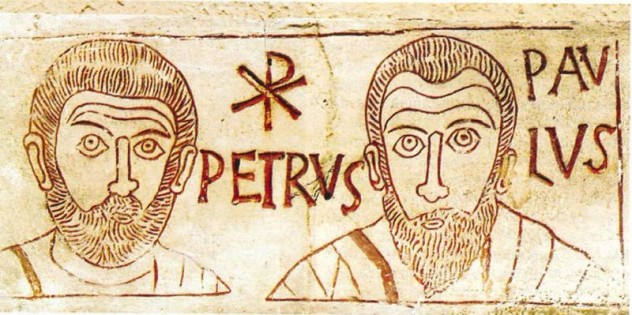
As depicted in the fourth-century etching above, Peter and Paul are considered early Christianity’s dynamic duo, working in tandem to evangelize the Roman Empire. In Galatians 2:7-8, Paul spells out this world-changing partnership: “I had been entrusted with the task of preaching the gospel to the uncircumcised, just as Peter had been to the circumcised. For God, who was at work in Peter as an apostle to the circumcised, was also at work in me as an apostle to the Gentiles.”
Marcion of Sinope, the most reviled heretic of the second century, regarded himself as a close follower of Paul and hinted that Peter had betrayed the trust placed in him by Jesus. Marcion spurned the tyrannical Jewish God of the Old Testament as having nothing to do with the loving God of the New Testament. To this end, he compiled a distinctive canon of scriptures containing only Paul’s epistles and a version of Luke with most of the Old Testament references cut out. His opponents accused him of doctoring the texts, eliminating all the Jewish features he could find.
Unsurprisingly, Marcion’s version of Paul’s epistles does not include Galatians 2:7-8, which points to Peter and Paul having a harmonious relationship and a shared doctrine. Naturally, many scholars point to this as one of the passages that Marcion cut out for conflicting with his teachings. But even today, there is considerable debate as to whether Marcion really expunged the text or whether it was inserted later by orthodox scribes with the intention of refuting Marcion.
Proponents of this view point to the oddity of Paul switching to the name Peter in verses 7–8, when he more usually refers to him as Cephas. Paul’s other writings also make no reference to the division of missionary responsibility spelled out in the disputed verses. In I Corinthians, he sees the “Cephas party” as just another faction he must contend with.
It is also argued that Tertullian, whose five-volume work Against Marcion constitutes the most detailed attack on the heretic, would not have failed to use the disputed verses had they existed at the time. The great New Testament scholar Adolf von Harnack put it best: “How advantageous would it otherwise have been for Tertullian to be able to triumphantly hold up . . . the acknowledgement of the Petrine Jewish apostolate by Paul himself, with this sentence to be able to negate the entire position of Marcion.”
Defenders of the verses’ authenticity point out that Paul’s passionate personality shows through in every line of the epistle. No ancient source doubted Paul as the author. And Tertullian’s apparent failure to use 2:7-8 as ammunition against Marcion doesn’t fully prove he didn’t have it. As Tertullian himself said in Against Marcion: “Let Marcion’s eraser be ashamed of itself: except that it is superfluous for me to discuss the passages he has left out, since my case is stronger if he is shown wrong by those he has retained.”
8The Salutation Of Romans

Many scholars have commented on the peculiarities of the salutation that opens Romans, Paul’s most theologically oriented epistle. In the ancient world, letters began with simple greetings, such as “Apion to Epimarchus his father and lord, heartiest greetings” or “Polycrates to his father, greeting.” Paul himself normally begins with a formulaic greeting along the lines of “Paul the Apostle, unto [recepients]; Grace be unto you, and peace, from God our Father and the Lord Jesus Christ.”
The greeting to the Romans departs from the norm by being extraordinarily long. Scholar J.C. O’Neill remarks that the passage “completely overloads the salutation and makes it a grammatical monstrosity, which no one writer would have perpetrated, and it looks very like a later insertion.” Those who hold that Paul wrote the passage in its entirety explain the weird opening as the result of Paul quoting a pre-existing creed known to the Roman church, in order to reassure a congregation he is apparently about to meet for the first time.
O”Neill, however, thinks it strange that Paul would cite a creed that is never brought up again and has no relevance to the rest of the epistle. His theory that this is a later insertion finds support in its omission from the Greek Codex Boernerianus, which opens simply: “Paul, servant of Jesus Christ, called an apostle among all the Gentiles on his behalf.” In O’Neill’s opinion, it is “hard to imagine a scribe omitting such a long and important section, even by accident, and therefore I conclude that the long section was a marginal comment or interpolation, which was incorporated very early into the standard text of Romans.”
However, many scholars are not convinced by the evidence of a solitary Greek codex, which dates to the ninth century at the earliest. As one work on the subject argues: “The number, the variety, and the early character of the texts preserved for us . . . is a guarantee that a text formed on critical methods represents . . . the work as it left its author’s hands.”
7The Agony In The Garden
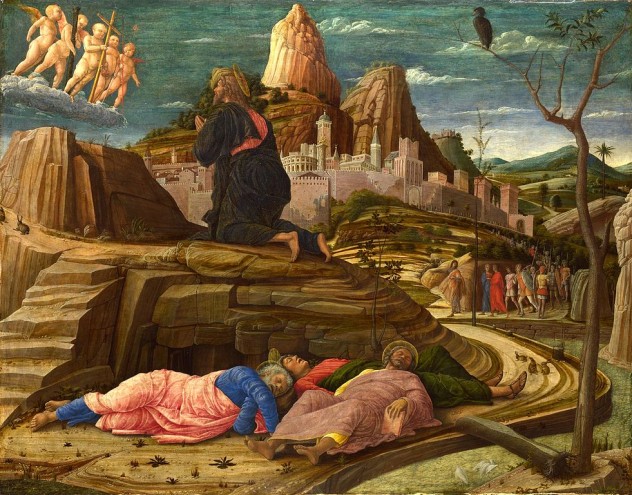
The episode where a despairing Jesus raised bloody sweat and had to be strengthened by an angel was very problematic for an early Christian sect known as the Docetists, who believed that Jesus was a divine phantom who did not have a real, fleshly body. But there are modern textual critics who believe Luke 22:43-44, where the story is found, was a later corruption inserted precisely to confound the Docetists, while creating a fulfillment scenario for Psalm 91:11-12 at the same time.
Proponents of interpolation argue that Luke would not have portrayed Jesus in such a feeble state, deathly terrified of his impending fate. A comparison with the Gospel of Mark, widely believed to be Luke’s source, indicates that Luke usually went out of his way to eliminate words that show Jesus in anguish (compare Luke 22:39-46 with Mark 14:33-35). In Luke, Jesus always stands cool and unperturbed in the face of torture and death. The bloody sweat and ministering angel are out of place in this picture.
However, scholars who believe the verses are authentic argue that Luke’s Jesus is not as calm and composed as the other camp makes out. Luke still has him plead with the Father to “remove this cup” of suffering, albeit only once (compared to a desperately insistent three times in Mark). Manuscript evidence is inconclusive, with slightly more ancient sources lacking the verses than having them. But the passage was certainly known and used by Church fathers in the second century, while its omission can only really be dated to the beginning of the third.
So if the passage is genuinely Lukan, why is it missing in so many manuscripts from the third century onward? Well, the period in question saw Christianity under attack from pagans like Celsus, Porphyry, and Julian the Apostate, who used the scriptures to disparage Christ. The episode in Gethsemane provided fodder for those who called Jesus a coward. It is supposed that Christians became embarrassed with the account and some preferred to drop it altogether.
6The Lukan Offertory
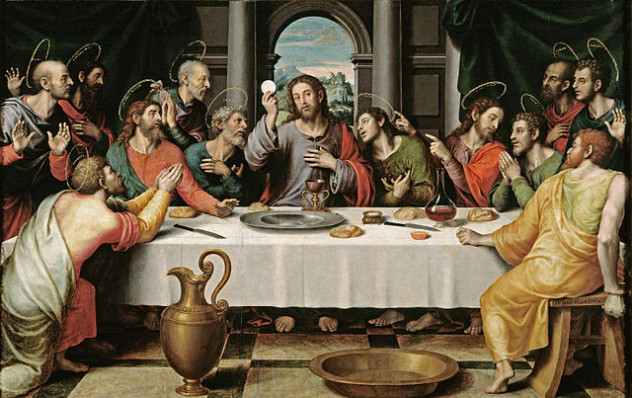
Christian Eucharistic celebrations repeat Christ’s words over the cup of wine at the Last Supper: “This is the chalice, the new testament in my blood, which shall be shed for you.” But did Jesus really say it? The passage where it appears, Luke 22:20, is not in the fifth- or sixth-century Codex Bezae. Since Bezae is notorious for adding text, rather than subtracting it, the omission has caused some scholars to speculate that the text was not originally part of Luke.
The doctrine of atonement conveyed by these words is also alien to Luke. In his Gospel and Acts, Luke portrays Christ’s death as a horrendous miscarriage of justice and nothing more. Christ’s blood is significant only in the sense that his unjust death pricked the conscience of some who called for it, leading to their conversion. The rejection of a vicarious sacrifice was quite conscious on Luke’s part. As Bible scholar Bart Ehrman writes: “Luke eliminated or changed the Markan references to Jesus’ atoning sacrifice; he chose not to quote Isaiah 53 to depict Jesus’ death as an atonement for sins, even though he quoted the passage otherwise . . . it is not at all difficult to account for an interpolation of the disputed words.”
Moreover, the wording of the disputed passages is rather non-Lukan. In fact, the passage looks closer to something Paul might have written. Thus, the longer reading may be a scribal attempt to inject I Corinthians 11:24 into Luke’s Gospel.
Defenders of the passage maintain that it doesn’t contradict Luke’s theology. While the passage is understood to be about atonement, Luke did not see it that way. Rather, he was drawing a parallel with the Passover lamb whose blood sealed the Old Covenant. The lamb was not itself a sin-offering. And Luke could have been transmitting an existing liturgical text, explaining why the vocabulary and style are so unlike him.
5Paul The Anti-Semite

“The Jews . . . killed the Lord Jesus.” Who knows how much anti-Semitism throughout history was inspired by this passage from I Thessalonians 2:14-16? But most scholars are of the opinion that Paul didn’t write that at all.
Paul, despite his abrogation of the Mosaic Law, retained tender feelings for his fellow Jews. This can be seen in particular in Romans 9-11, which speak of God’s plan for Israel. Paul doesn’t condemn the Jews for killing Christ. Nowhere does he say that the Jews will be destroyed. On the contrary, Paul says they are going to be saved.
The contrast with the vindictiveness of I Thessalonians 2:16, with its reference to “the wrath of God,” is jarring. The whole passage is often taken as a reference to the bloody fall of Jerusalem and the destruction of the Temple in AD 70 by the Romans. Yet Paul was already dead by AD 70, so someone else must have written that verse.
On the flipside, there is no manuscript evidence to support the interpolation theory, as the disputed verses appear in all widespread early texts. Conservative scholars dismiss claims to inauthenticity as simply based on conjecture. They argue that the alleged anti-Semitic tone is more apparent than real. Paul was not condemning all Jews, only those directly responsible for Jesus’s death and for persecuting the Judaean churches. And “God’s wrath” need not necessarily refer to the events of AD 70. There were many prior events that could be construed as divine punishment, such as the bloodbath in Jerusalem and other violent upheavals in AD 49.
4Paul The Misogynist
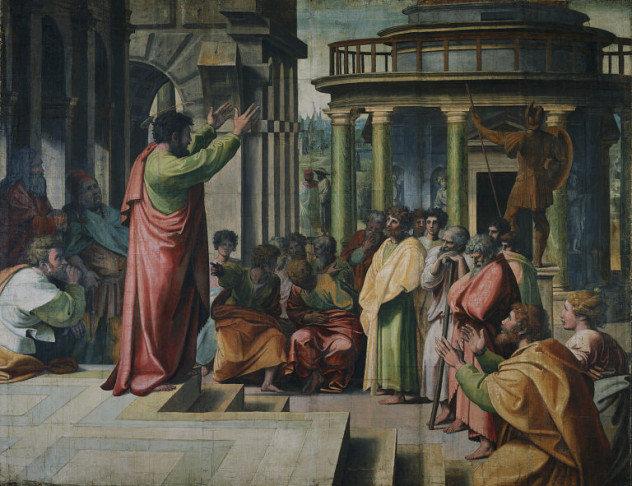
Was Paul a misogynist? Did he treat women as second-class citizens? It might seem so from I Corinthians 14:34-35, where he commands the ladies to be submissive and keep silent in church. This passage is a head-scratcher, since Paul specifically gives rules for women speaking in church a few chapters earlier. Unless Paul was schizophrenic, one of the two passages must have been written by somebody else. Most scholars believe that 14:34-35 is the false one, since it echoes the misogyny of I Timothy 2, a passage which is generally considered a forgery. Presumably, the verses were added by someone with an agenda against the female sex, which fits poorly with Paul’s declaration that “there is neither male nor female. For you are all one in Christ Jesus.”
Another strike against the passage is how out of place it seems wedged between verses 33 and 36, which both discuss prophecy. In some ancient manuscripts, 33 and 36 are connected, with 34-35 only appearing at the end of the chapter. How the text ended up in two different places is inexplicable if the text is authentic. In AD 546, Bishop Victor of Capua ordered that 34-35 be dropped entirely from the Codex Fuldensis, indicating that he was aware of manuscripts, now long gone, that omit the passage entirely.
The counterargument is that all the manuscripts we do have contain 34-35, indicating that early scribes didn’t doubt their authenticity. As for its insecure location, it has been suggested that Paul might have written it as an afterthought in the margin of his epistle. Some copyists, uncertain where to place it, stuck it at the end of the chapter, while others sandwiched it between 33 and 36.
3The Long Ending Of Mark

Sorry, snake handlers, but Mark 16:9-20 may not actually have promised you won’t die from venom. The passage also promises the ability to exorcise demons, immunity to poison, and the power to heal the sick. Unfortunately, it doesn’t appear in the best and oldest existing manuscripts, including the great codices Sinaiticus and Vaticanus. Textual critics now theorize that the passage was a second-century scribal attempt to supply a proper finish to the otherwise rather abrupt ending of the second Gospel.
No one knows exactly why Mark would end at 16:8, as it does in the oldest manuscripts. Perhaps the last page of the original was lost, destroying the ending, which must have been an appearance by Jesus in Galilee. In one early version, a scribe appears to have improvised a shorter ending: “But they reported briefly to those with Peter all that had been commanded them. And afterward Jesus himself sent out through them from the East even to the West the sacred and incorruptible message of eternal salvation.” If the Long Ending verses are genuine, why would this scribe choose to replace them with a comparatively bland passage of his own?
The Long Ending is also very different from Mark’s usual writing style, containing words and expressions he never uses elsewhere. Tellingly, it borrows elements from Luke 24 and John 20, even though Mark would not have been familiar with either text, since both were written later. A medieval source ascribes 9-20 to an elder named Ariston. There’s no particular reason to believe that, but it shows that doubts over the Long Ending go back a long way.
Defenders of the passage point out that the Long Ending does appear in the vast majority of Greek manuscripts, Sinaiticus and Vaticanus notwithstanding. It was also regarded as authoritative by early Christian writers like Irenaeus. But the consensus among scholars is that Mark 16:9-20 should be regarded as inauthentic. The Revised Standard Version and other modern Bibles simply leave it in the footnotes.
2The Woman Taken In Adultery

Christians who oppose the death penalty frequently quote John 8:7, in which Jesus makes a famous challenge to the accusers of a woman caught in adultery: “He that is without sin among you, let him first cast a stone at her.” It’s a powerful moment, but did Jesus really say it?
Most scholars are now agreed that the story of the adulteress was not originally in John. The newest versions often contain marginal notes making readers aware of its spurious nature. Typical is the note in the New International Version informing readers that “the earliest and most reliable manuscripts and other ancient witnesses do not have John 7:53-8:11.”
No surviving Greek manuscript before the fifth century contains the story. Its first attestation is in the Codex Bezae, which has a habit of adding things. Early texts also tend to move it around. In some, it is found at the very end of the Gospel of John, or in the margin near 7:52. Some even locate it after Luke 21:38. Byzantine scribes indicated on the margin beside the text that they were doubtful of its genuineness. Church Fathers such as Origen and Chrysostom never referred to it in their verse-by-verse commentaries on John’s Gospel.
At the start of the fifth century, St. Augustine was so bothered by the large number of copies without the story that he offered this explanation: “Certain persons of little faith, or rather enemies of the true faith, fearing, I suppose, lest their wives should be given impunity in sinning, removed from their manuscripts the Lord’s act of forgiveness toward the adulteress, as if he who had said, ‘sin no more,’ had granted permission to sin.” Modern supporters of the story are of the same opinion.
But if it was edited out, why were the inoffensive verses 7:53-8:2 deleted as well? In the end, the manuscript evidence, the stylistic differences between the story and the rest of John (17 percent of its words cannot be found elsewhere in the Gospel), and the break in the flow of thought it creates between 7:52 and 8:12 make an overwhelming case for inauthenticity.
1The Johannine Comma
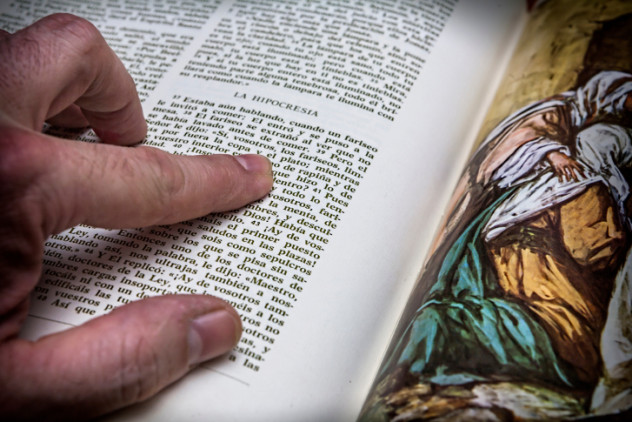
The highly nuanced doctrine of the Trinity is a bit hazy in the Bible, so some scholars think scribes might have resorted to fabricating the scriptural proof themselves. Notably, they might have added the famous Johannine Comma to I John 5:7, which reads: “And there are three that bear record in heaven, the Father, the Word, and the Holy Ghost. And these three are one.” This is one passage where the case for inauthenticity is virtually a slam dunk.
Only eight extant Greek manuscripts from the 10th century onward contain the Comma. Four of these have the text only on the margin. All appear to be translations of the Latin Vulgate, itself a late text. No Church Father quotes it in debates with anti-Trinitarian heretics like the Arians. It is supposed that the Comma originated as a marginal note in certain Latin versions, eventually making its way into the Vulgate.
The few proponents of the Comma accuse the Arians of suppressing the text. They argue that Bishop Cyprian appears to reference the Comma around AD 250. In the late fourth century, St. Jerome was aware of copies with the Comma and raged against scribes who were deleting it, calling them “unfaithful translators . . . who have kept just the three words water, blood and spirit in this edition, omitting mention of Father, Word and Spirit.”
But is it really believable that the Arians could have expunged so many Greek manuscripts, even with their dominance of the Eastern Roman Empire for half a century? Textual critics think not. Modern critical versions of the Bible now usually omit the Comma. For example, the English Standard Version reads: “For there are three that testify: the Spirit and the water and the blood; and these three agree.”
Larry is a freelance writer whose main interest is history.








